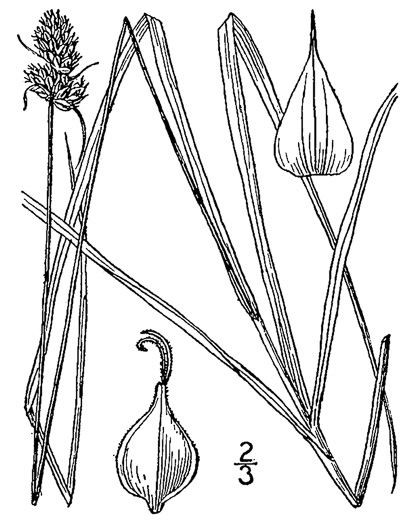WEAKLEY'S FLORA OF THE SOUTHEASTERN US (2/10/25):
Carex austrina
FAMILY
Cyperaceae
Go to FSUS key
Dig deeper at SERNEC, a consortium of southeastern herbaria.
Learn more at Vascular Plants of North Carolina.
SYNONYMOUS WITH
PLANTS NATIONAL DATABASE:
Carex austrina
FAMILY
Cyperaceae
SYNONYMOUS WITH Floristic Synthesis of North America. BONAP (Kartesz, 2021)
Carex austrina
SYNONYMOUS WITH Flora of North America north of Mexico, vol. 23 (2002)
Carex austrina
SYNONYMOUS WITH Britton & Brown Illus Flora of Northeast US & adjacent Canada (Gleason, 1952)
Carex muhlenbergii var. australis
INCLUDED WITHIN Manual of the Southeastern Flora (Small, 1933, 1938)
Carex muhlenbergii
SYNONYMOUS WITH --
Carex muhlenbergii var. austrina
COMMON NAME:
Southern Sedge
To see larger pictures, click or hover over the thumbnails.
WEAKLEY'S FLORA OF THE SOUTHEASTERN US (2/10/25):
Carex austrina
FAMILY
Cyperaceae
SYNONYMOUS WITH
PLANTS NATIONAL DATABASE:
Carex austrina
FAMILY
Cyperaceae
SYNONYMOUS WITH
Floristic Synthesis of North America. BONAP (Kartesz, 2021)
Carex austrina
SYNONYMOUS WITH
Flora of North America north of Mexico, vol. 23
Carex austrina
SYNONYMOUS WITH
Britton & Brown Illus Flora of Northeast US & adjacent Canada (Gleason, 1952)
Carex muhlenbergii var. australis
INCLUDED WITHIN
Manual of the Southeastern Flora (Small, 1933, 1938)
Carex muhlenbergii
SYNONYMOUS WITH
--
Carex muhlenbergii var. austrina
If a search such as "Carex leptalea var. leptalea" doesn't deliver the results you want, try "Carex leptalea".
Or, to minimize chances of a misspelling, try just "Carex le".
Less is more: If "pencil flower" doesn't deliver the results you want, try "pencil".


